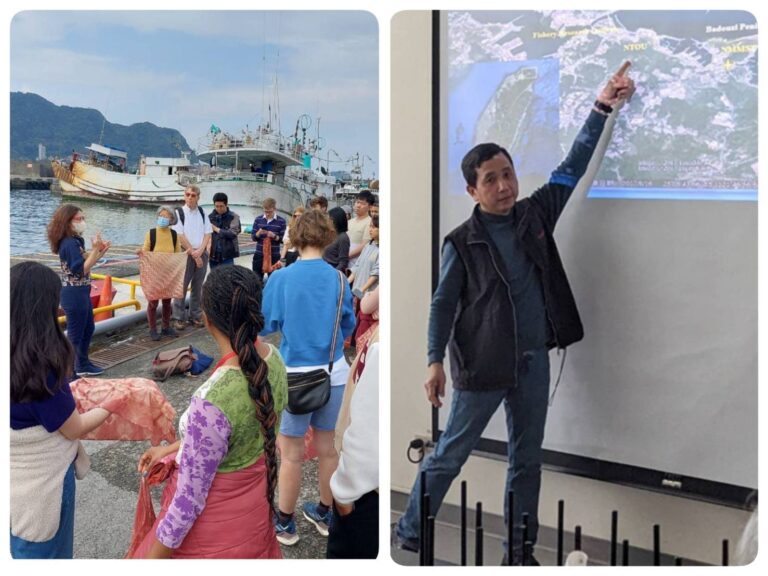【Article by IMAS】
The Joint Class, titled “Strait, Ocean, and Japanese Colonization,” was a collaboration between the International Master’s Program in Asia-Pacific Studies (IMAS) at National Chengchi University (NCCU) and Williams College. It took place following Taiwan’s 2024 Presidential Election. The first activity involved visiting the Straits Exchange Foundation to gain insights into the recent cross-strait situation. IMAS student Briana J. Boland provided an introduction to the foundation’s background. Subsequently, Dr. David Tawei Lee, the foundation’s chairman and former Minister of Foreign Affairs and Secretary-General of the National Security Council, addressed the current challenges facing Taiwan-China-US relations and warmly engaged in a Q&A session with students from both institutions.
Following this, students visited the Coal Mining Museum. IMAS Vietnamese student Trần Huỳnh Bảo Khánh offered an overview of Taiwan’s coal industry, which flourished during Japanese colonization but declined in the 1980s due to global market competition. A museum guide then introduced early mine shafts, mining tools, and the hardships faced by miners. Students also experienced a ride on coal carts from half a century ago, immersing themselves in the mining environment.
After checking into the hotel and dining, participants from both institutes rested for several hours before commencing their midnight classes. As Taiwan’s first railroad started from Keelung, students utilized railway level crossings as makeshift classrooms to learn about the city.
IMAS Polish student Antoni Mazek pointed out that Keelung was formerly colonized by the Spanish and the Dutch, but its true prosperity emerged during the Japanese colonial era, when it evolved into a vital military port. Consequently, Keelung endured significant bombing by American aircraft during World War II. Today, traces of this history, like air raid shelters in residential areas, still exist, offering students a chance for exploration.
Due to Keelung’s coastal location and flourishing fishing industry, IMAS American student Rachel Bernstein elaborated on the evolution of Keelung’s fishery distribution center since the Qing Dynasty, now recognized as Taiwan’s largest fish market. Despite operating exclusively from midnight onwards, the market exudes a vibrancy comparable to daytime. Merchants from diverse regions procure fish catches from northern Taiwan’s ports, swiftly transporting them to markets across the country. Alongside observing an array of fish and seafood products, students were exposed to various sales processes, including transportation and bidding.
The following day, students visited a fishing village to learn about early fishermen’s dyeing techniques using local plants. Amidst their exploration, they gained insight into local temples and deities that safeguard fishermen. At the fishing port, IMAS Professor, Deasy Simandjuntak, a Dutch scholar specialized in Southeast Asia, shed light on the role of Indonesian fishermen in Taiwan’s economy and the human rights challenges they encounter.
The final class was held at the National Museum of Marine Science and Technology, which collaborated with IMAS four years ago (http://tinyurl.com/2chegahq). Professor Tony Shih explained that the museum, originally a Japanese-era power plant, had been repurposed to preserve history. The coal used to power the plant was sourced from the mining area visited by students the day before. Adjacent to the classroom, remnants of American airstrikes during World War II serve as poignant reminders of the past.
Cornelius C. Kubler, Stanfield Professor of Asian Studies at Williams College, lauded the course as the most captivating in his extensive collaboration with Taiwanese academic institutions. Philip Hsiaopong Liu, IMAS Professor and Director, emphasized the significance of off-campus teaching, inviting Williams College students to NCCU next year to deepen their understanding of Taiwanese culture alongside IMAS international students.


-768x578.png)
-768x768.jpg)
-768x1024.jpg)
.png)
-768x576.png)
-768x1024.jpg)
-768x1024.jpg)
-768x1020.png)
-768x1024.jpg)
-768x576.jpg)
-768x1024.jpg)
-768x1024.png)